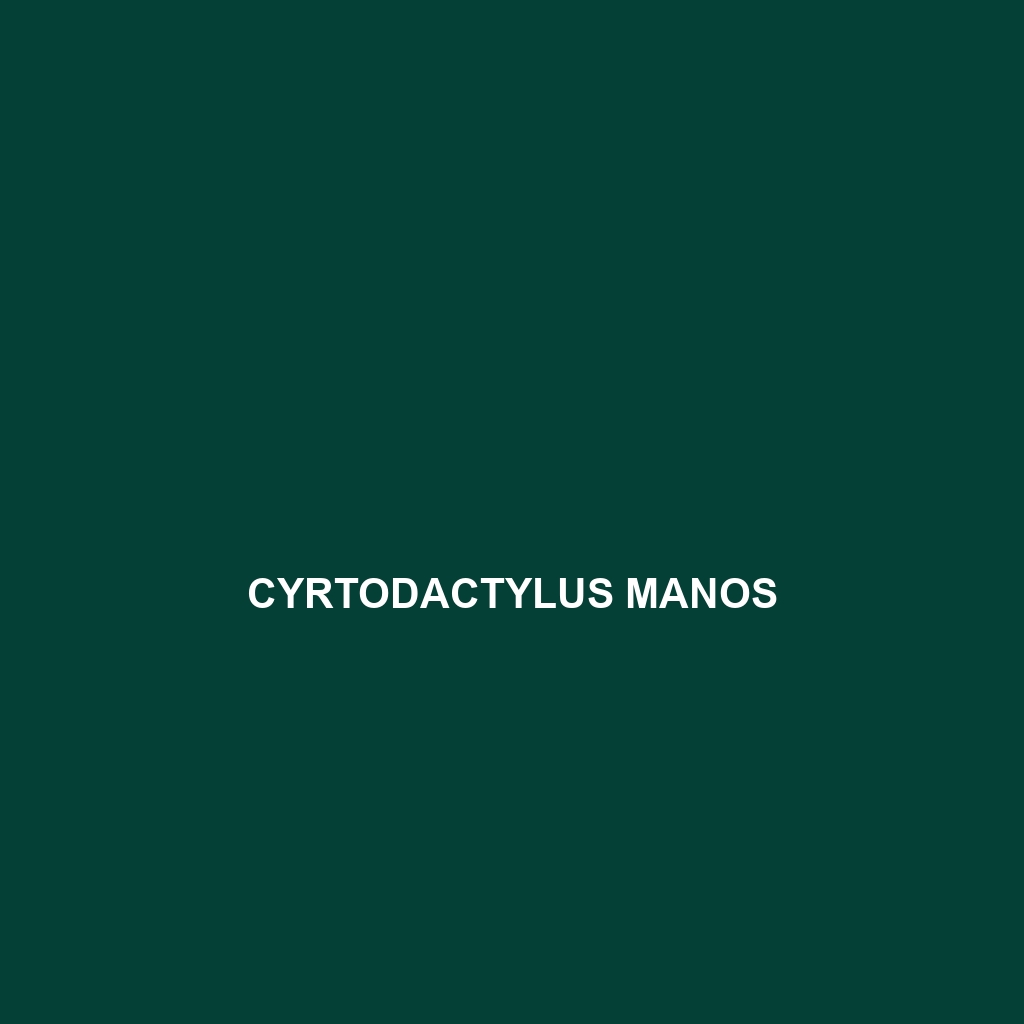-

Cyrtodactylus nagalandensis
Cyrtodactylus nagalandensis, a vulnerable gecko species native to the lush forests of Nagaland, India. Measuring 10-15 cm, this nocturnal predator is known for its striking coloration, excellent climbing abilities, and vital role in controlling insect populations.
-

Cyrtodactylus myaleiktaung
Cyrtodactylus myaleiktaung, a vulnerable gecko species native to the lush forests of Myanmar, measuring 15 to 25 cm in length with a distinctive light brown to dark gray coloration and patterns. This nocturnal predator plays a crucial role in its ecosystem by controlling insect populations while facing threats from habitat destruction.
-

Cyrtodactylus montanus
montane bent-toed gecko, Cyrtodactylus montanus, a stunning nocturnal reptile native to the humid montane forests of Southeast Asia, characterized by its distinctive coloration, climbing abilities, and a diet primarily consisting of small invertebrates. With a vulnerable conservation status, protecting this species is essential for preserving its mountainous ecosystem.
-

Cyrtodactylus mimikanus
fascinating Cyrtodactylus mimikanus, or Mimika Flat-Headed Gecko, a nocturnal species native to the rainforests of Papua New Guinea. Known for its sandy brown to olive green coloration and flattened head, this agile gecko plays a crucial role in controlling insect populations while facing threats from habitat loss.
-

Cyrtodactylus medioclivus
Cyrtodactylus medioclivus, a slender gecko native to the humid tropical forests of Southeast Asia, known for its earthy camouflage and agile hunting behavior. This nocturnal species plays a vital role in controlling insect populations and is currently listed as ‘Vulnerable’ due to habitat loss.
-

Cyrtodactylus manipurensis
Common Name: Cyrtodactylus manipurensis Scientific Name: Cyrtodactylus manipurensis Habitat: Cyrtodactylus manipurensis primarily inhabits the northeastern region of India, particularly in the state of Manipur. This species thrives in a variety of environments, including humid forests, rocky hillsides, and grasslands. The geophysical features of its habitat include limestone karsts and shrub-forest margins, providing ample cover and…
-

Cyrtodactylus mamanwa
Cyrtodactylus mamanwa, a vulnerable nocturnal gecko from the moist forests of the Philippines, features a distinctive banded pattern for excellent camouflage and has a diet primarily consisting of insects. This species plays a vital role in its ecosystem by controlling insect populations and serving as prey for larger predators.
-

Cyrtodactylus maelanoi
Cyrtodactylus maelanoi is a vulnerable gecko species native to the limestone karst habitats of Southeast Asia, particularly Laos and northern Vietnam. Measuring 10 to 15 cm, this nocturnal insectivore is known for its distinctive coloration, climbing skills, and vital role in maintaining ecological balance.
-

Cyrtodactylus macrotuberculatus
Cyrtodactylus macrotuberculatus, a vulnerable gecko species native to Southeast Asia, characterized by its robust, flattened body measuring up to 18 cm, distinctive earthy coloration, and remarkable climbing abilities. This nocturnal predator thrives in humid, tropical forests and plays a vital role in maintaining ecological balance by controlling insect populations.
-

Cyrtodactylus loriae
Cyrtodactylus loriae, or Loria’s bent-toed gecko, a nocturnal species native to the tropical rainforests of New Guinea, characterized by its brown mottled appearance and agile climbing abilities. This gecko plays a crucial role in its ecosystem by controlling insect populations while facing threats from habitat loss, making its conservation vital.
Search
Popular Posts
-
Lampropeltis abnorma
Discover the striking Lampropeltis abnorma, or Central American Kingsnake, known for its vibrant coloration and smooth, glossy scales. Found in Central America’s tropical rainforests, this nocturnal predator plays a crucial role in its ecosystem by controlling pest populations and maintaining balance among small mammal and reptile communities.
-
Lamprolepis smaragdina
The Emerald Tree Skink (Lamprolepis smaragdina) is a vibrant, arboreal reptile native to tropical rainforests in the South Pacific, recognized for its striking green coloration, slender build, and prehensile tail. Primarily insectivorous, these skinks thrive in humid environments and play a vital role in maintaining ecological balance within their habitats.
-
Lamprolepis nieuwenhuisii
Discover the stunning Lamprolepis nieuwenhuisii, also known as the Nieuwenhuis’ Wrinkle-scaled Lizard, native to the rainforests of Southeast Asia. This fascinating species is characterized by its unique wrinkled scales, vibrant coloration, and agile movements, playing a vital role in its ecosystem as both a predator and prey.
Categories
Tags
animal adaptations (850) animal behavior (4898) animal reproduction (830) behavior (920) biodiversity (7464) conservation (1670) conservation efforts (1649) conservation status (5327) diet (2102) echolocation (822) ecological balance (1841) ecological role (1702) ecology (796) ecosystem (1469) ecosystem role (2797) endangered species (2472) environmental conservation (782) habitat (3269) habitat conservation (1030) Habitat Destruction (1243) habitat loss (3223) insectivorous reptiles (825) IUCN Red List (1720) lizard reproduction (801) nocturnal animals (2738) nocturnal behavior (2473) nocturnal reptiles (891) physical characteristics (2032) reproduction (2880) reptile behavior (805) reptile conservation (1148) reptile reproduction (842) rodent species (1325) seed dispersal (2115) Seed Disperser (971) small mammals (1166) snake behavior (766) snake diet (872) snake reproduction (939) South America (801) tropical forests (944) Vulnerable Species (4739) wildlife (2510) wildlife conservation (5021) wildlife protection (947)



